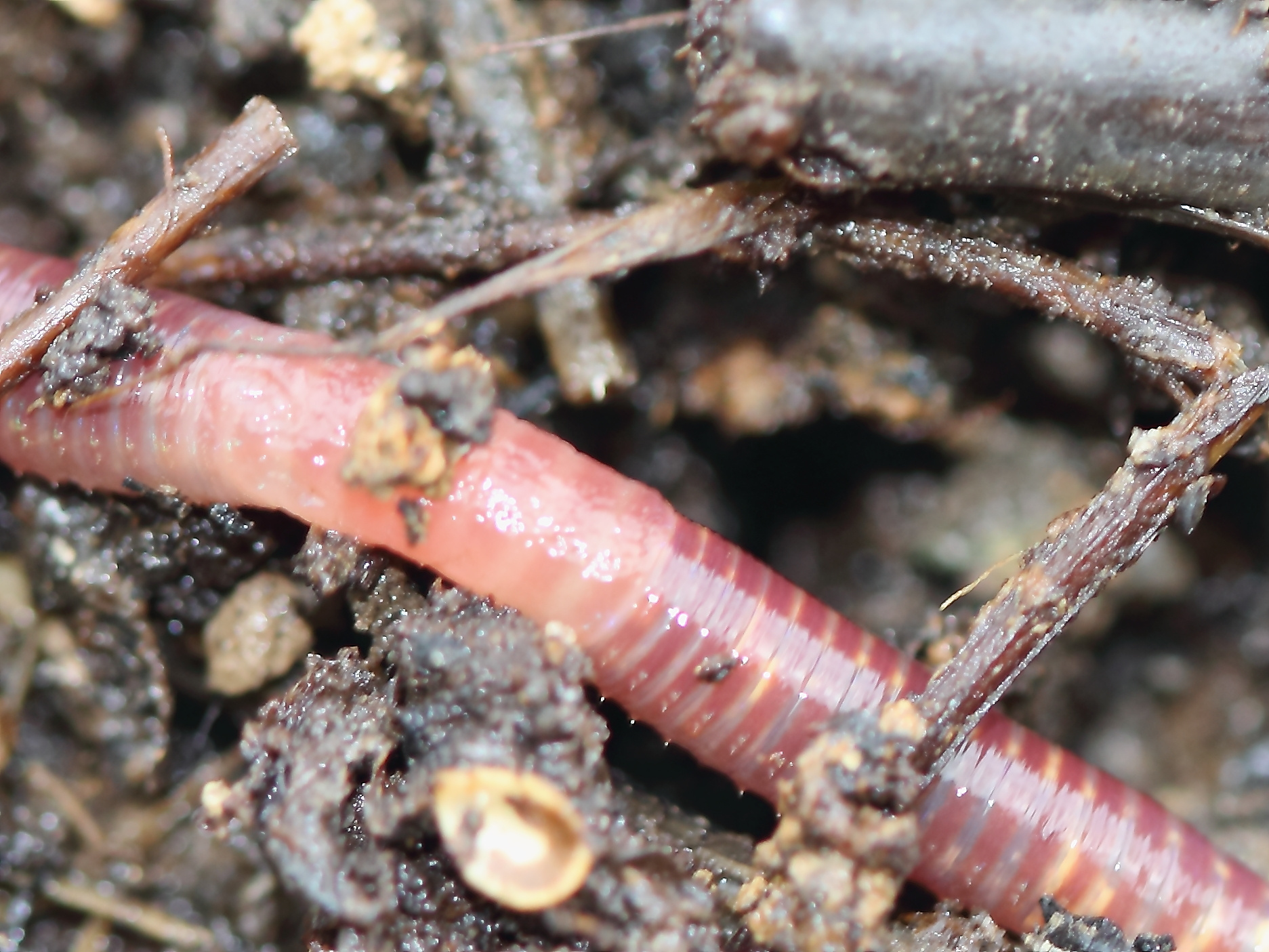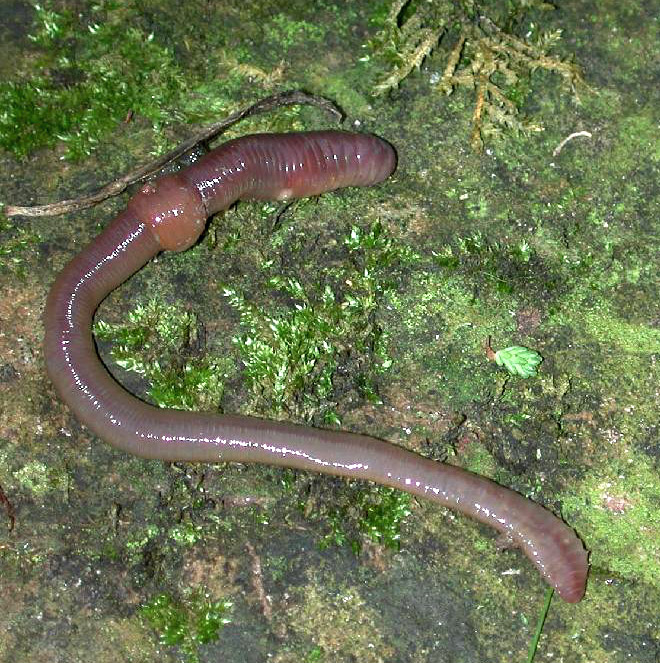|
Vermicompost
Vermicompost (vermi-compost) is the product of the decomposition process using various species of worms, usually red wigglers, white worms, and other earthworms, to create a mixture of decomposing vegetable or food waste, bedding materials, and vermicast. This process is called vermicomposting, with the rearing of worms for this purpose is called vermiculture. Vermicast (also called worm castings, worm humus, worm poop, worm manure, or worm faeces) is the end-product of the breakdown of organic matter by earthworms. These excreta have been shown to contain reduced levels of contaminants and a higher saturation of nutrients than the organic materials before vermicomposting. Vermicompost contains water-soluble nutrients which may be extracted as vermiwash and is an excellent, nutrient-rich organic fertilizer and soil conditioner.Coyne, Kelly and Erik Knutzen. ''The Urban Homestead: Your Guide to Self-Sufficient Living in the Heart of the City.'' Port Townsend: Process Self Relia ... [...More Info...] [...Related Items...] OR: [Wikipedia] [Google] [Baidu] |
Vermifilter
A vermifilter (also vermi-digester or lumbrifilter) is an aerobic treatment system, consisting of a biological reactor containing media that filters organic material from wastewater. The media also provides a habitat for aerobic bacteria and composting earthworms that purify the wastewater by removing pathogens and oxygen demand. The "trickling action" of the wastewater through the media dissolves oxygen into the wastewater, ensuring the treatment environment is aerobic for rapid decomposition of organic substances. Vermifilters are most commonly used for sewage treatment and for agro-industrial wastewater treatment. Vermifilters can be used for primary, secondary and tertiary treatment of sewage, including blackwater and greywater in on-site systems and municipal wastewater in large centralised systems. Vermifilters are used where wastewater requires treatment before being safely discharged into the environment. Treated effluent is disposed of to either surface or subsu ... [...More Info...] [...Related Items...] OR: [Wikipedia] [Google] [Baidu] |
Eisenia Fetida
''Eisenia fetida'', known under various common names such as manure worm, redworm, brandling worm, panfish worm, trout worm, tiger worm, red wiggler worm, etc., is a species of earthworm adapted to Decomposition, decaying organic material. These worms thrive in rotting vegetation, compost, and manure. They are epigean, rarely found in soil. In this trait, they resemble ''Lumbricus rubellus''. The red wiggler is reddish-brown in color, has small rings around its body, and has a yellowish tail. Groups of bristles (called setae) on each segment of the worm move in and out to grip nearby surfaces as it stretches and contracts its muscles to push itself forward or backward. ''E. fetida'' worms are native to Europe, but have been introduced (both intentionally and unintentionally) to every other continent except Antarctica. ''E. fetida'' also possesses a unique natural defense system in its coelomic fluid; cells called coelomocytes secrete a protein called lysenin, which is a por ... [...More Info...] [...Related Items...] OR: [Wikipedia] [Google] [Baidu] |
Permaculture
Permaculture is an approach to land management and settlement design that adopts arrangements observed in flourishing natural ecosystems. It includes a set of design principles derived using Systems theory, whole-systems thinking. It applies these principles in fields such as regenerative agriculture, town planning, rewilding (conservation biology), rewilding, and community resilience. The term was coined in 1978 by Bill Mollison and David Holmgren, who formulated the concept in opposition to modern industrialized methods, instead adopting a more traditional or "natural" approach to agriculture. Multiple thinkers in the early and mid-20th century explored no-dig gardening, no-till farming, and the concept of "permanent agriculture", which were early inspirations for the field of permaculture. Mollison and Holmgren's work from the 1970s and 1980s led to several books, starting with ''Permaculture One'' in 1978, and to the development of the "Permaculture Design Course" which has ... [...More Info...] [...Related Items...] OR: [Wikipedia] [Google] [Baidu] |
Eudrilus Eugeniae
''Eudrilus eugeniae'', also called the "African nightcrawler", is an earthworm species native to tropical west Africa and now widespread in warm regions under vermicompost; it is an excellent source of protein and has great pharmaceutical potential. Growth Fecundity, growth, maturation and biomass production were all significantly greater at 25 °C than 15°, 20°or 30°. The growth of individual earthworms increases as the population density lowers, but the greatest overall earthworm biomass production occurs at the highest population density. The greatest number of cocoons per week and the number of hatchlings per cocoon are obtained at 25 °C. Cocoons of ''E. eugeniae'' hatched in only 12 days at 25 °C, and the worms reach sexual maturity in as little as 35 days after hatching. Etymology Named after Johan Gustaf Hjalmar Kinberg's Swedish survey ship, the 'Eugenie'. Life cycle Throughout its life cycle, ''E. eugeniae'' grows much more rapidly than ''Eis ... [...More Info...] [...Related Items...] OR: [Wikipedia] [Google] [Baidu] |
Humus
In classical soil science, humus is the dark organic matter in soil that is formed by the decomposition of plant and animal matter. It is a kind of soil organic matter. It is rich in nutrients and retains moisture in the soil. Humus is the Latin word for "earth" or "ground". In agriculture, "humus" sometimes also is used to describe mature or natural compost extracted from a woodland or other spontaneous source for use as a soil conditioner. It is also used to describe a topsoil horizon that contains organic matter (''humus type'', ''humus form'', or ''humus profile''). Humus has many nutrients that improve the health of soil, nitrogen being the most important. The ratio of carbon to nitrogen ( C:N) of humus commonly ranges between 8:1 and 15:1 with the median being about 12:1. It also significantly improves (decreases) the bulk density of soil. Humus is amorphous and lacks the cellular structure characteristic of organisms. The solid residue of sewage sludge treatment, w ... [...More Info...] [...Related Items...] OR: [Wikipedia] [Google] [Baidu] |
Eisenia Hortensis
The European nightcrawler (''Dendrobaena hortensis'') is a medium-small earthworm averaging about 1.5 g when fully grown. Generally blueish, pink-grey in color with a banded or striped appearance, the tips of their tails are often cream or pale yellow. When the species has not been feeding, it is pale pink. The species is usually found in deep woodland litter and garden soils that are rich in organic matter in European countries. ''D. hortensis'' is sold primarily as a bait worm, but its popularity as a composting worm is increasing. It was considered part of '' Eisenia'' until 2003. It is also formerly considered part of the similar '' Dendrobaena veneta'', but now just part of the species complex. Both are useful compost worms. The two species are probably not distinguished in vermicomposting. In general, the ''E. hortensis'' name is more common in North America while the ''D. veneta'' name is more common in Europe. Etymology The former genus ''Eisenia'' is named after Swedis ... [...More Info...] [...Related Items...] OR: [Wikipedia] [Google] [Baidu] |
Worm
Worms are many different distantly related bilateria, bilateral animals that typically have a long cylindrical tube-like body, no limb (anatomy), limbs, and usually no eyes. Worms vary in size from microscopic to over in length for marine polychaete worms (bristle worms); for the African giant earthworm, ''Microchaetus rappi''; and for the marine nemertean worm (bootlace worm), ''Lineus longissimus''. Various types of worm occupy a small variety of parasitism, parasitic niches, living inside the bodies of other animals. Free-living worm species do not live on land but instead live in marine or freshwater environments or underground by burrowing. In biology, "worm" refers to an obsolete taxon, ''Vermes'', used by Carl Linnaeus, Carolus Linnaeus and Jean-Baptiste Lamarck for all non-arthropod invertebrate animals, now seen to be paraphyletic. The name stems from the Old English word ''wikt:wyrm, wyrm''. Most animals called "worms" are invertebrates, but the term is also use ... [...More Info...] [...Related Items...] OR: [Wikipedia] [Google] [Baidu] |
Earthworms As Invasive Species
Earthworms are invasive species throughout the world. Of a total of about 6,000 species of earthworm, about 120 species are widely distributed around the globe. These are the peregrine or cosmopolitan earthworms. Some of these are invasive species in many regions. Australia Australia has 650 known species of native earthworm that survive in both rich and in nutrient-poor conditions where they may be sensitive to changes in the environment. The total native species numbers are predicted to exceed 1,000.Blakemore, Rob''Diversity of exotic earthworms in Australia - a status report.''Transactions of the Royal Zoological Society of New South Wales, 1999 "Approximately 350 native species in about 30 genera are currently described for Australia, but an estimate of total number is about three times as large (Blakemore 1997a)." Introduced species are commonly found in agricultural environments along with persistent natives. 66 exotic species are known by 1999, most of which have been int ... [...More Info...] [...Related Items...] OR: [Wikipedia] [Google] [Baidu] |
Lampito Mauritii
Megascolecidae is a family of earthworms native to Madagascar, Australia, New Zealand, Asia, and North America. At up to 2 meters in length, their large size distinguishes the Megascolecidae from other earthworm families. They are an essential part of maintaining soil structure, minor carbon sequestration, and maintaining terrestrial ecosystems. Physiological features Different species of the Megascolecidae have different physiological features, but some similarities of physiological features can be found between species. The family contains relatively large individuals. The length of earthworms can vary from to . The number of spermathecal pores is normally paired, but multiples can be present in some species. The location of spermathecal pores and how they are positioned in different segmental locations is used in the identification of different megascolecidids. Earthworms ingest a variety of organic materials in the soil since they live in terrestrial environments. Earthwo ... [...More Info...] [...Related Items...] OR: [Wikipedia] [Google] [Baidu] |
Worm Cast
A worm cast is a structure created by worms, typically on soils such as those on beaches that gives the appearance of multiple worms. They are also used to trace the location of one or more worms. References External links Soil science Worms (obsolete taxon) {{zoology-stub ... [...More Info...] [...Related Items...] OR: [Wikipedia] [Google] [Baidu] |
Earthworm
An earthworm is a soil-dwelling terrestrial invertebrate that belongs to the phylum Annelida. The term is the common name for the largest members of the class (or subclass, depending on the author) Oligochaeta. In classical systems, they were in the order of Opisthopora since the male pores opened posterior to the female pores, although the internal male segments are anterior to the female. Theoretical cladistic studies have placed them in the suborder Lumbricina of the order Haplotaxida, but this may change. Other slang names for earthworms include "dew-worm", "rainworm", "nightcrawler", and "angleworm" (from its use as angling hookbaits). Larger terrestrial earthworms are also called megadriles (which translates to "big worms") as opposed to the microdriles ("small worms") in the semiaquatic families Tubificidae, Lumbricidae and Enchytraeidae. The megadriles are characterized by a distinct clitellum (more extensive than that of microdriles) and a vascular system ... [...More Info...] [...Related Items...] OR: [Wikipedia] [Google] [Baidu] |


